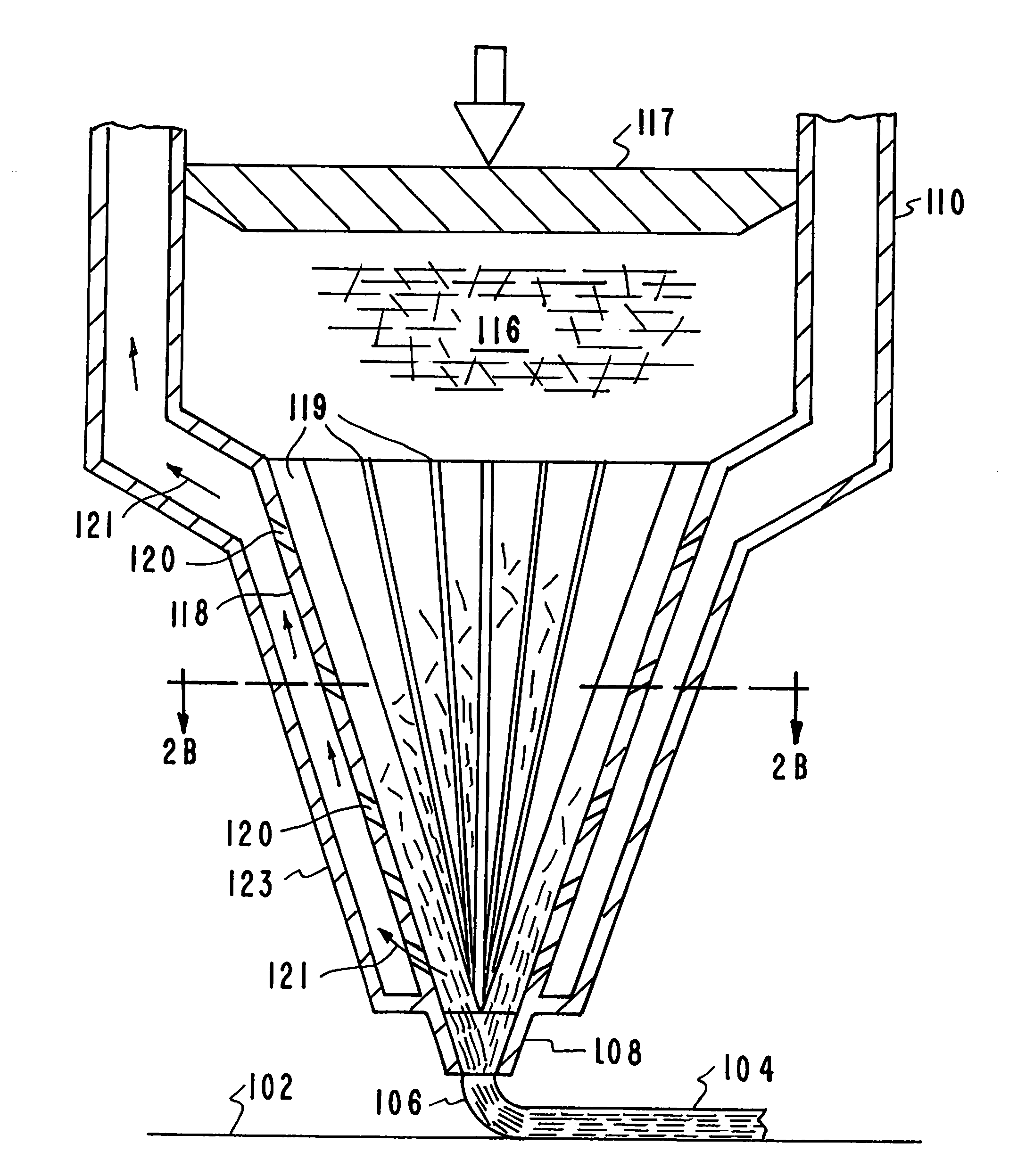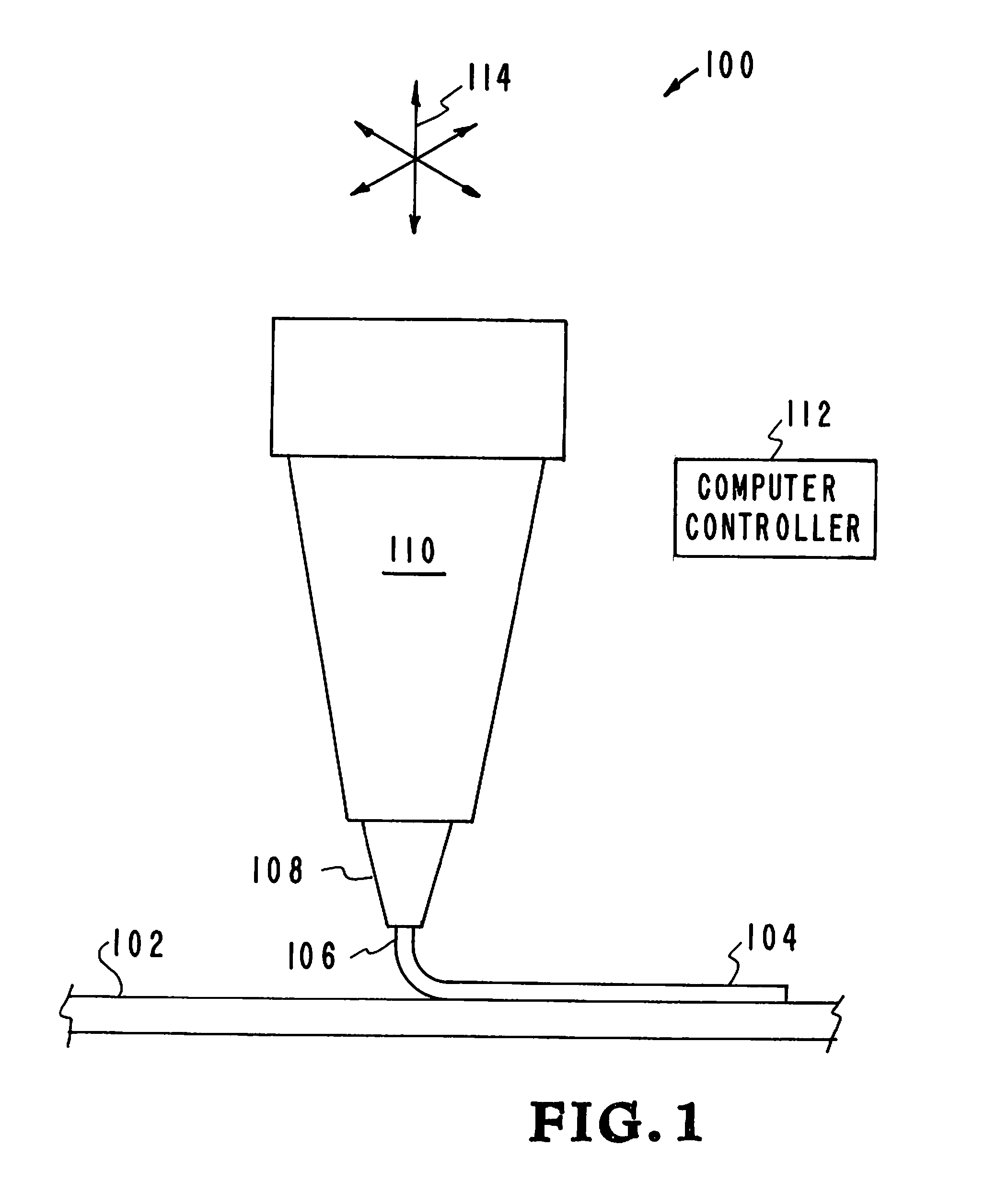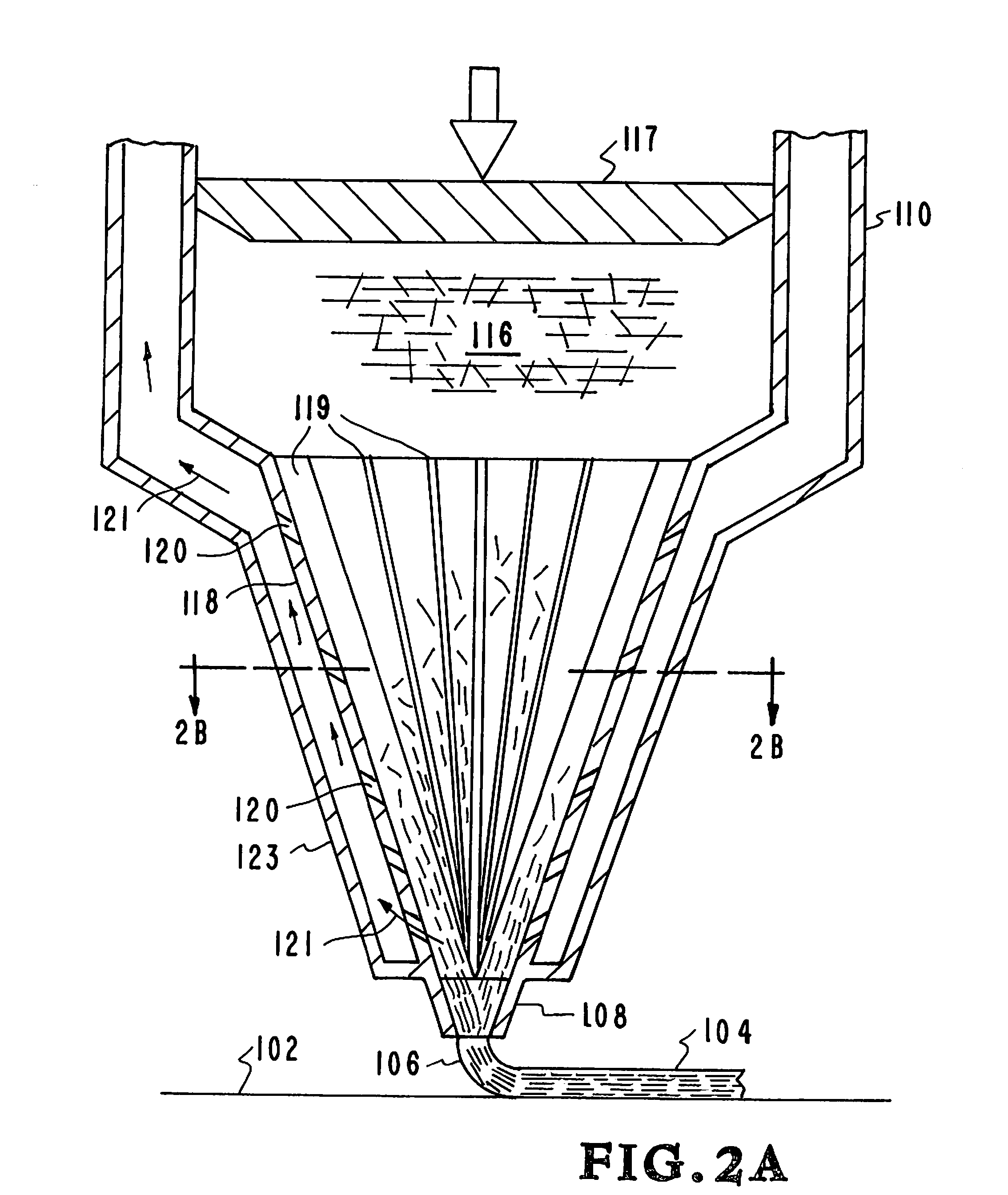Additive manufacturing of short and mixed fibre-reinforced polymer
a technology of fibre reinforced polymer and additive manufacturing, which is applied in the direction of additive manufacturing processes, manufacturing tools, applying layer means, etc., can solve the problems of limiting limiting the control of the final component micro-meso structure, and little control of the internal fiber phase alignment, so as to limit the mechanical performance and reliability of final parts, performance, reliability and repeatability of parts and processes. , the effect of limiting the control of the final component micro-mes
- Summary
- Abstract
- Description
- Claims
- Application Information
AI Technical Summary
Benefits of technology
Problems solved by technology
Method used
Image
Examples
Embodiment Construction
[0029]Referring to the drawings, to the following detailed description, and to incorporated materials, detailed information about the apparatus, systems, and methods is provided including the description of specific embodiments. The detailed description serves to explain the principles of the apparatus, systems, and methods. The apparatus, systems, and methods are susceptible to modifications and alternative forms. The application is not limited to the particular forms disclosed. The application covers all modifications, equivalents, and alternatives falling within the spirit and scope of the apparatus, systems, and methods as defined by the claims.
[0030]High performance carbon fiber / thermoset polymer (CF / thermoset) composites are a potentially transformative materials solution for a range of applications including aerospace and defense as they can have mechanical properties approaching that of steel at a fraction of the density. However the development and application of these mate...
PUM
| Property | Measurement | Unit |
|---|---|---|
| size | aaaaa | aaaaa |
| width | aaaaa | aaaaa |
| length | aaaaa | aaaaa |
Abstract
Description
Claims
Application Information
 Login to View More
Login to View More - R&D
- Intellectual Property
- Life Sciences
- Materials
- Tech Scout
- Unparalleled Data Quality
- Higher Quality Content
- 60% Fewer Hallucinations
Browse by: Latest US Patents, China's latest patents, Technical Efficacy Thesaurus, Application Domain, Technology Topic, Popular Technical Reports.
© 2025 PatSnap. All rights reserved.Legal|Privacy policy|Modern Slavery Act Transparency Statement|Sitemap|About US| Contact US: help@patsnap.com



